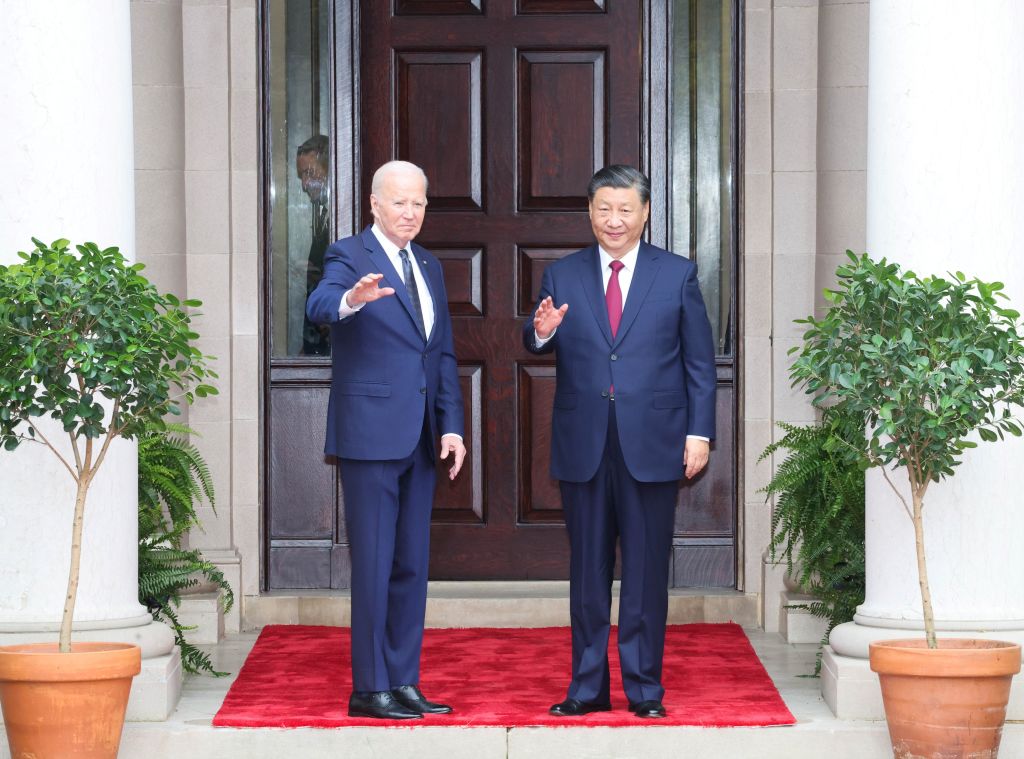
When Chinese President Xi Jinping met with US President Joe Biden last November, some interpreted it as a return to engagement. In fact, it heralded only a minor détente, not a major change in policy.
The United States’ engagement with the People’s Republic of China began with Richard Nixon in 1972 and was expanded by Bill Clinton. Since then, critics have described US policy as naive, owing to its failure to understand the Chinese Communist Party’s long-term objectives. Underpinning the policy was the prediction, from modernisation theory, that economic growth would propel China down the same liberalising path as other Confucian societies like South Korea and Taiwan. Xi, however, has made China more closed and autocratic.
Still, America’s engagement policy always had a realistic dimension. While Nixon wanted to engage China to balance the Soviet threat, Clinton made sure that engagement accompanied a reaffirmation of the US–Japan security treaty for the post–Cold War era. Those who accuse Clinton of naivety ignore that this hedge came first, and that the US–Japan alliance remains a robust and fundamental element of the balance of power in Asia today.
To be sure, there was some artlessness, such as when Clinton dismissed China’s efforts to control the internet by joking that it would be like ‘trying to nail jello to the wall’. In fact, China’s ‘great firewall’ of state censorship has worked quite well. Similarly, there’s now broad agreement that China should have been punished more for its failure to comply with World Trade Organization rules, especially considering that it owes its WTO accession to the US.
Nonetheless, there were signs that China’s rapid economic growth was producing some liberalisation, if not democratisation. Many experts argued that Chinese citizens were enjoying greater personal freedom than at any time in China’s history. Before taking office, National Security Adviser Jake Sullivan and White House Asia coordinator Kurt Campbell—the Biden administration’s two leading officials on Asian policy—noted that Washington’s ‘basic mistake of engagement was to assume that it could bring about fundamental changes to China’s political system, economy, and foreign policy’. On balance, they were correct about the inability to force fundamental changes in China. But that doesn’t mean no changes occurred.
On the contrary, Chinese foreign policy on key issues such as nuclear non-proliferation and UN sanctions against Iran and North Korea underwent notable revisions. Moreover, China watchers pointed to other signals such as greater freedom to travel, increases in foreign contacts, a broader range of published views, and the emergence of human-rights NGOs.
When I was serving in the Clinton administration, I told Congress that, if we treated China as an enemy, we were guaranteeing an enemy in the future; if we treated China as a friend, we could not guarantee friendship, but we could at least keep open the possibility of more benign outcomes. US Secretary of State Colin Powell echoed this point in 2001, telling Congress: ‘China is not an enemy, and our challenge is to keep it that way.’
Looking back now, I still think engagement was realistic, though I plead guilty to having had higher expectations for Chinese behaviour than what we have seen from Xi. While some Chinese blame Donald Trump for killing engagement, he was more like a boy who poured gasoline on a fire that China had lit.
This brings us to Xi, who came to power in late 2012 and immediately cracked down on political liberalisation, while trying to preserve market openness. In recent years, he has shifted to increasing support for state-owned enterprises and tightening controls on private firms, telling US officials that he wants a ‘new model for great-power relations’ that stresses equal partnership. Meanwhile, he has ordered top commanders of the People’s Liberation Army to prepare for conflict, because the West would never accept China’s peaceful rise.
While Trump and Xi each played important roles in the Sino-American rupture, the death of engagement has deeper roots. From the late 1970s, Deng Xiaoping used market reforms to lift China out of poverty, while maintaining a modest foreign policy based on the proverbial advice to ‘hide your strength and bide your time’. But under Hu Jintao, Chinese elites saw the 2008 global financial crisis (which started on Wall Street) as a sign of American decline, and thus discarded Deng’s foreign policy.
Although China had benefited from the liberal international economic order, its leaders now wanted more. They not only used state subsidies that distorted international trade, but also engaged in large-scale cyber theft of intellectual property. In the South China Sea, it went far beyond legal limits in creating artificial islands. In 2015, Xi told US President Barack Obama that he would not militarise the islands, but then went ahead and did so. In 2016, when an arbitral tribunal ruled against China’s claims in a case brought by the Philippines, China ignored the verdict.
China had begun to act like a great power, but its actions produced reactions, not least from America, where embitterment was reinforced by the loss of jobs to Chinese imports. Voters in the affected areas responded readily to Trump’s populism and protectionism in 2016.
Thus, we can date engagement’s last gasp to 2015, when China and the US cooperated in supporting the Paris climate agreement. While Xi and Obama also held a summit and agreed not to use cyber espionage for commercial purposes, that understanding became a dead letter when Trump took office in 2017.
In any case, disillusionment had already set in, and engagement was effectively dead by 2016. In today’s era of great-power competition, ‘managed competition’ and ‘competitive coexistence’ have replaced engagement. RIP.

